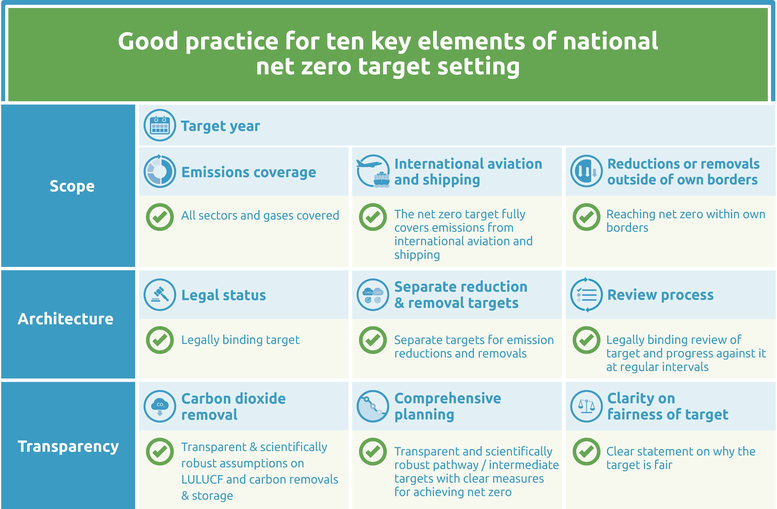Net zero targets
Summary
NOTE: India submitted a Long-Term Low-Carbon Development Strategy (LTS) to the UNFCCC on November 14, 2022. The CAT's analysis of the LTS will be forthcoming shortly.
We evaluate the net zero target as: Target information incomplete.
At COP26, Prime Minister Narendra Modi announced India's net zero target to be reached by 2070 (Ministry of External Affairs, 2021).
No details on the nature of the target were provided in the original announcement or have been released since then. Its updated NDC, submitted in August 2022, simply makes reference to “our long term goal of reaching net-zero by 2070” (Government of India, 2022).
According to media reports, India is working on a long-term strategy that will include an emissions pathway to net zero (The Economic Times, 2022a). A number of sector specific working groups, including energy supply, transport, buildings, industry, agriculture, and waste, have reported been established and analysis commissioned (Press Information Bureau, 2022; Reuters, 2022; The Economic Times, 2022b). No timeline has been given for when the strategy would be made public.
In March 2022, the city of Mumbai launched its Climate Action Plan to become net GHG zero by 2050 (Municipal Corporation of Greater Mumbai, 2022). City of Gurugram is also drafting a net zero by 2050 city plan, due by next year (Times of India, 2022).
CAT analysis of net zero target
Ten key elements
Scope
- Target year – India aims to reach net zero by 2070.
- Emissions coverage – In his announcement at COP26, Prime Minister Modi referred to “achiev[ing] the target of net zero” without specifying whether this covers all greenhouse gas (GHG) emissions or CO2 emissions only (Ministry of External Affairs, 2021). India’s NDC update also only makes reference to ‘net-zero by 2070’ without specifying gas coverage (Government of India, 2022).
Media reports suggest that India is taking an economy-wide approach and is undertaking broad sectoral analysis, which suggests that at least all sectors would be covered if not all gases (The Economic Times, 2022a). - International aviation and shipping – India provides no information on its intention to cover international aviation and shipping.
- Reductions or removals outside of own borders – India provides no information on its intention to use international offset credits to meet its net zero target.
Target architecture
- Legal status – Prime Minister Modi announced India's net zero target at a speech at COP26 (Ministry of External Affairs, 2021). Reference was also made to the target in India’s August 2022 NDC update (Government of India, 2022). According to media reports, India is working on a long-term strategy (LTS) (The Economic Times, 2022a).
- Separate reduction & removal targets – India provides no information on its intention to communicate separate emission reduction and removal targets.
- Review process – India provides no information on its intention to establish a review cycle for its net zero and intermediate targets.
Transparency
- Carbon dioxide removal – India provides no information on whether and how it intends to rely on carbon dioxide removal. According to media reports, carbon capture technology is being considered as part of its long-term emissions pathway development (The Economic Times, 2022a).
- Comprehensive planning – India has not yet communicated a comprehensive plan on how it intends to achieve its net zero target including underlying governmental analysis identifying emission reduction pathways, measures for reaching net zero, and sector-level (interim) targets. According to media reports, planning for such an emissions pathway is underway (The Economic Times, 2022a).
- Clarity on fairness of target – India provides no information on the fairness of this target.
Good practice
The Climate Action Tracker has defined the following good practice for all ten key elements of net zero targets. Countries can refer to this good practice to design or enhance their net zero targets.
Further analysis
Latest publications
Stay informed
Subscribe to our newsletter





